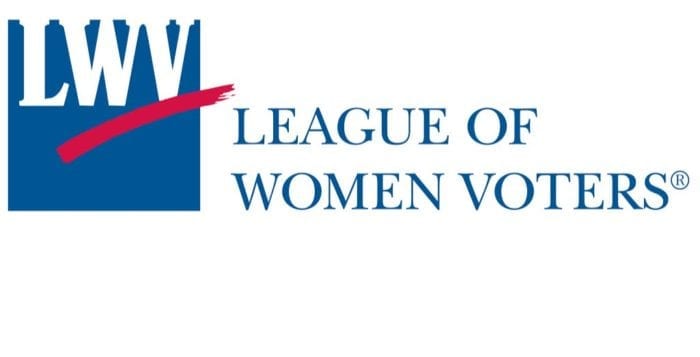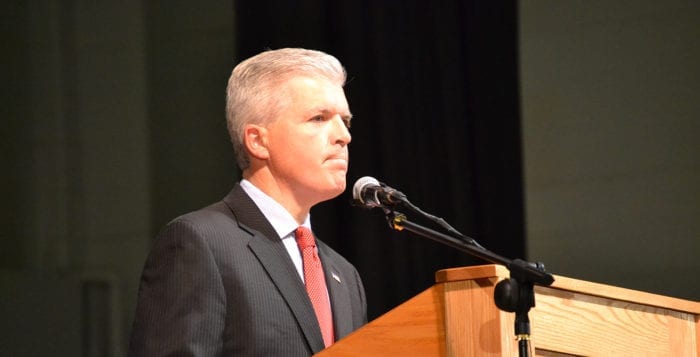Homeless people living in Suffolk County might soon find a roof over their heads in Port Jefferson Station.
New York Gov. Andrew Cuomo (D) announced May 10 that $25.6 million has been awarded to four housing developments on Long Island to create 239 affordable homes.
There is $8.1 million set aside for construction of six two-story buildings on vacant land off Route 112 in Port Jefferson Station, north of East Grove Street and south of Washington Avenue. Phase One of the project would create 77 units, while a potential second phase would add an additional 31 apartments, according to Brookhaven Councilwoman Valerie Cartright (D-Port Jefferson Station) speaking during a May 22 Port Jefferson Station/Terryville Civic Association meeting. The site plan application for the project was listed as
“in-review” in Brookhaven documents as of April 30, though the property is already properly zoned for the requested use and it doesn’t require any variances, according to town spokesperson Kevin Molloy. The Port Jeff Station project would include 45 units for homeless individuals, half of which would be reserved for veterans, Cartright said.
“Our biggest concern, besides the tax part that they’re not bringing any kind of revenue to our community, is also the amount of kids that may come out of this facility.”
— Sal Pitti
The May 10 announcement ignited a strong reaction from the Port Jefferson Station community both on social media and at the May 22 meeting. Civic association President Sal Pitti said he, Cartright and representatives from Concern for Independent Living Inc., the nonprofit agency seeking to construct the facility, met in March to discuss the potential project, concerns of the community and the agency’s efforts to gain tax exempt status for the project from the state. Cartright and Brookhaven Supervisor Ed Romaine (R) both said May 22 they were caught off guard by the governor’s announcement about the funding.
“As soon as I found out anything about it, I ran into the supervisor’s office asking him what he knew about it and wanted to make sure that I had all the information necessary,” Cartright said. “Immediately afterwards we contacted the civic association … it was news to us as well.”
Pitti said he thought the organization had been less than forthcoming about its plans, suggesting Concern for Independent Living initially didn’t mention the potential second phase, which is also not referenced in Cuomo’s announcement.
“Our biggest concern, besides the tax part that they’re not bringing any kind of revenue to our community, is also the amount of kids that may come out of this facility, because more kids in our school district means more taxes on top of the taxes we’re already paying for that location,” he said.
Elizabeth Lunde, Senior Associate Executive Director for Concern for Independent Living said leadership of the civic association had been invited to visit one of the organizations other facilities, and the invitation remains on the table.
“Concern for Independent Living is a local organization that has been providing quality housing in Suffolk County for decades,” she said in an email. “We were founded in 1972 and our first office was located in Port Jefferson Station. We currently operate over 1,000 units of affordable rental housing that has made a very positive impact in Suffolk and Nassau Counties as well as Brooklyn and the Bronx.”
Several attendees of the May 22 civic meeting expressed displeasure about the project, suggesting Port Jeff Station already has its fair share of facilities for homeless people.
“Homeless families need a place to live — our community is a very giving community.”
— Edward Garboski
“Homeless families need a place to live — our community is a very giving community,” civic association Vice President Edward Garboski said May 22. A resident at the meeting responded, summing up a sentiment seemingly shared by most of the attendees: “We don’t want to be the only community giving.”
The Port Jefferson project is receiving only a small part of more than $200 million the state is awarding to build or preserve more than 2,800 affordable apartments across New York, according to a press
release from Cuomo’s office. The governor called the $200 million investment a “giant step forward to increase access to homes for families, seniors and our most vulnerable men and women across the state.”
RuthAnne Visnauskas, commissioner of New York State Homes and Community Renewal program, said the investment would address the crisis of homelessness among other benefits.
“By delivering affordable homes to Long Island, we continue to grow its economy,” she said in a statement.
Romaine said the town is concerned about the governor’s announcement and suggested other ways he thought the money could be better used. He also instructed concerned residents to start a petition and direct it to Cuomo’s office.
“We’ve been begging the state of New York to give us some money to fix up zombie homes, and to make them available to first time home buyers and veterans,” he said. “We’d like that money going toward that housing, instead of building something new, how about we rebuild some of the neighborhoods that we lost during the Great Recession to foreclosures and zombie houses. How about giving homes to our veterans and first-time home buyers who are leaving the area.”




















